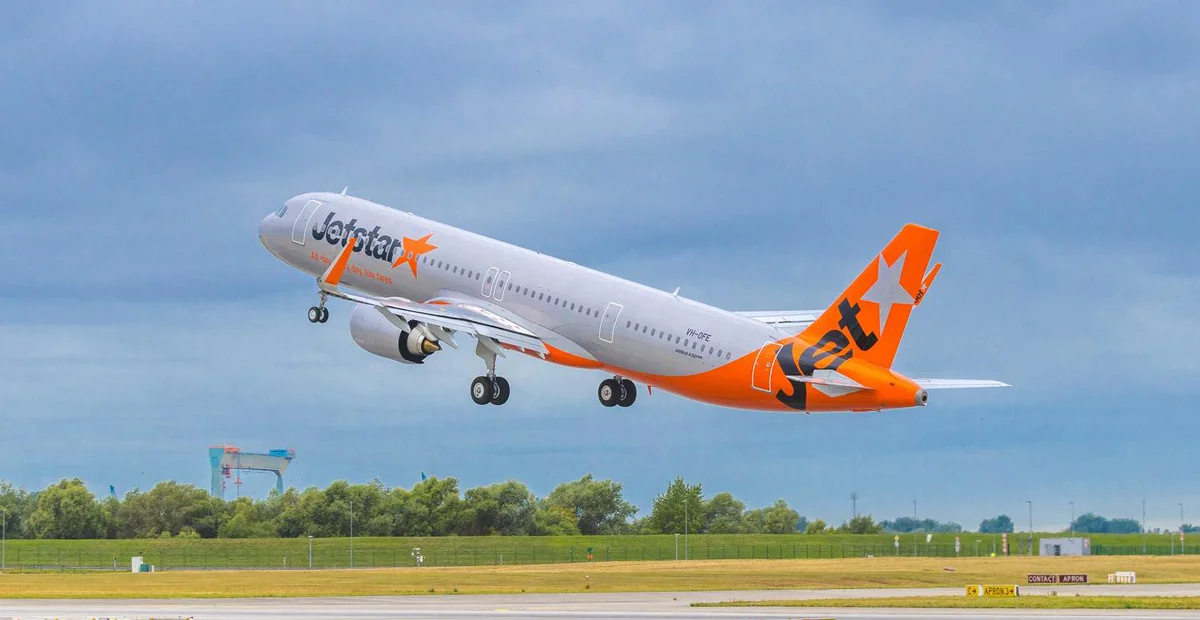Jetstar Airways stands as one of the Asia-Pacific region’s leading low-cost carriers, with a steadfast commitment to making air travel accessible and affordable. From modest beginnings to becoming a major player in the budget airline industry, Jetstar has transformed how millions experience air travel throughout the region.
Taking Flight: The History of Jetstar Airways
Jetstar Airways was established in 2003 as a low-cost subsidiary of Qantas, Australia’s flag carrier. The airline was created as part of Qantas’ dual-brand strategy, with Qantas serving the premium and business market while Jetstar focuses on leisure travelers seeking affordable options.
The airline took to the skies with its inaugural flight on May 25, 2004, connecting Sydney to the Gold Coast. Rapidly gaining popularity among budget-conscious travelers, Jetstar expanded its network first within Australia before venturing internationally. In December 2005, the airline launched its first international service, connecting Australian cities to Christchurch, New Zealand.
The Jetstar brand expanded into Asia when Jetstar Asia Airways began operations from its Singapore hub to Hong Kong in December 2004. This marked Qantas’ strategic entry into the competitive Asian low-cost market. In July 2006, Jetstar and Jetstar Asia were unified under the single “Jetstar” brand, strengthening the airline’s regional presence.
Further expansion occurred with the establishment of Jetstar Japan in 2012, which later designated Kansai International Airport in Osaka as its second hub in 2014. In 2015, Jetstar Japan commenced international services, connecting Kansai International Airport with Hong Kong International Airport.
By the Numbers: Jetstar Airways Stats
Jetstar has grown into an aviation leader with impressive statistics:
- Collectively, the Jetstar Group has flown more than 300 million passengers since its launch in 2004
- Offers more than 5,000 flights weekly (pre-COVID) to approximately 64 destinations in 14 countries
- Maintains a fleet of more than 100 aircraft with a focus on fuel-efficient models
- Operates as part of the broader Jetstar Group, with presences in multiple countries
- Named Best Low-Cost Airline in the Australia-Pacific region by Skytrax multiple times
Fleet and Equipment
Jetstar Airways operates a modern and fuel-efficient fleet designed to support its low-cost business model:
- The majority of the fleet consists of Airbus A320 family aircraft, including A320-200s and A321-200s for short and medium-haul routes
- Boeing 787-8 Dreamliners serve international long-haul destinations
- New additions include the Airbus A321neo (LR) with enhanced range capabilities
- The airline has placed significant orders for next-generation aircraft, including A320neos and A321XLRs
In November 2023, Jetstar announced a major revamp of its fleet of 11 Boeing 787-8 Dreamliners, scheduled to begin in late 2025. The multi-million dollar upgrade will include new RECARO seats in both business and economy class, with business class seating increasing from 21 to 44 seats.
Hub Cities: Jetstar’s Major Operations
Jetstar Airways has strategically positioned its operations throughout the Asia-Pacific region:
- Melbourne, Australia: Main headquarters and operational base
- Sydney, Australia: Major domestic and international hub
- Brisbane, Australia: Significant presence for domestic and regional flights
- Gold Coast, Australia: Key leisure destination hub
- Auckland, New Zealand: Main hub for New Zealand operations
- Singapore: Base for Jetstar Asia operations
- Tokyo and Osaka, Japan: Hubs for Jetstar Japan
The Jetstar Group: A Regional Network
The Jetstar Group comprises several airlines that together form an extensive low-cost network across the Asia-Pacific region:
- Jetstar Airways: The original Australian operation (wholly owned by Qantas Group)
- Jetstar Asia: Based in Singapore with flights throughout Southeast Asia
- Jetstar Japan: A joint venture operating domestic and international flights from Japan
The Group’s extensive route network serves approximately 64 destinations across 14 countries and territories, connecting major cities, regional centers, and popular holiday destinations.
Looking Forward
As the aviation industry continues to evolve, Jetstar remains committed to its founding mission of offering “all day, every day low fares to enable more people to fly to more places, more often.” The airline has invested significantly in fleet modernization, with orders for new-generation aircraft that will enhance fuel efficiency, reduce environmental impact, and improve passenger comfort.
Despite challenges including the COVID-19 pandemic, which forced temporary suspensions of services and fleet reductions, Jetstar has maintained its position as a key player in the Asia-Pacific aviation market. The airline’s focus on operational excellence, strategic network development, and commitment to affordability continues to resonate with travelers seeking value without compromising on quality.
With its extensive network, modern fleet, and two-decade legacy of democratizing air travel, Jetstar Airways remains at the forefront of low-cost aviation in the Asia-Pacific region, connecting people and places while making travel accessible to millions.
Keyword: TopAirlines

